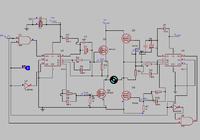Warpspeed
Advanced Member level 5
- Joined
- May 23, 2015
- Messages
- 2,366
- Helped
- 773
- Reputation
- 1,548
- Reaction score
- 789
- Trophy points
- 1,393
- Location
- Melbourne, Australia
- Activity points
- 20,317
Without being able to see waveforms, its difficult to know what is actually changing.


